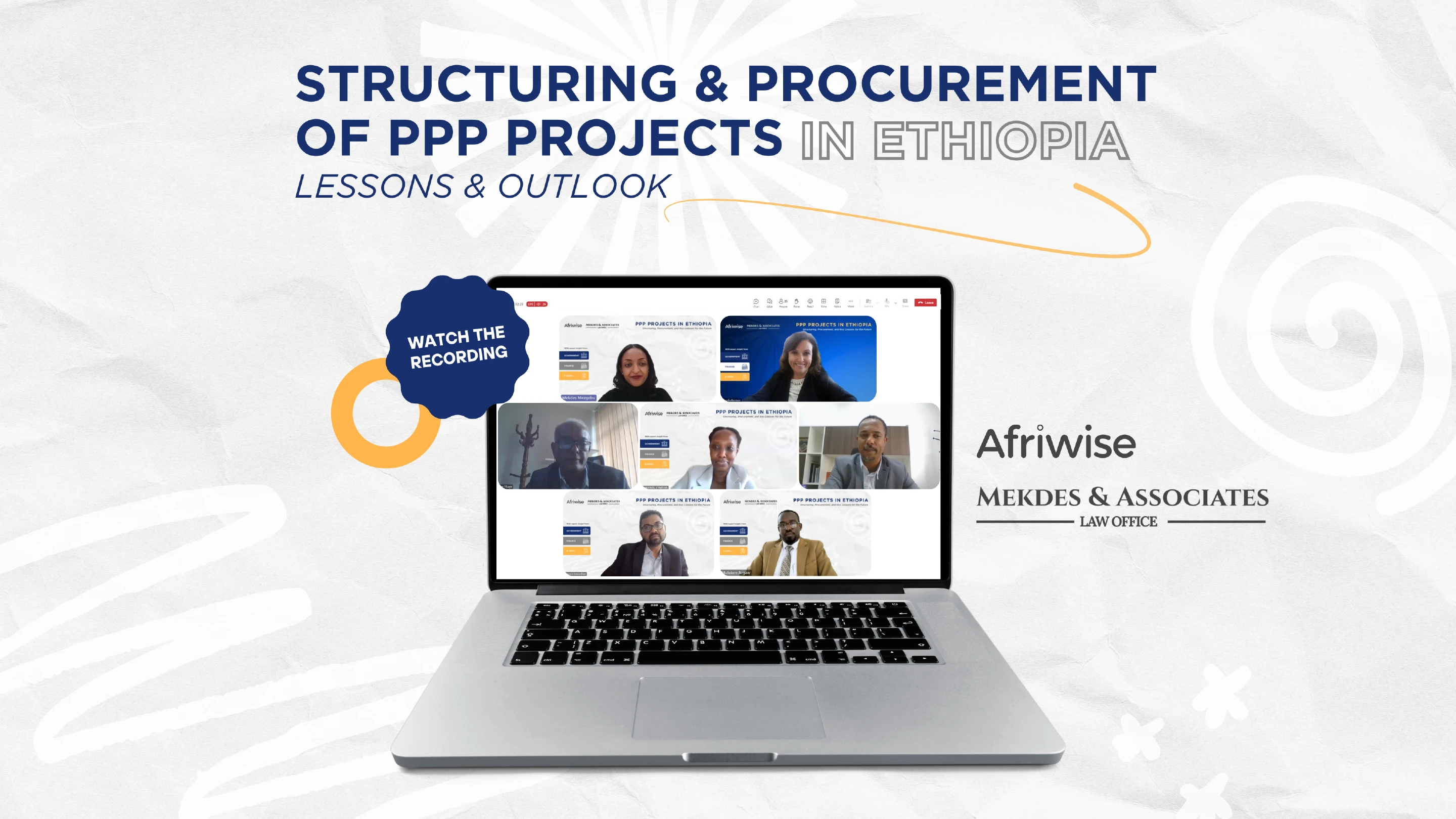Structuring and Procurement of PPP Projects in Ethiopia
Ethiopia’s PPP journey began in 2017 with a policy shift toward private financing of infrastructure. Since then, key legal and regulatory frameworks have been introduced, alongside a growing pipeline of projects. Despite progress, challenges have slowed implementation, prompting major reforms including amendments to the PPP Proclamation and directives from the National Bank. This webinar explores the current PPP landscape, procurement models, and opportunities across sectors like energy and health, offering practical insights for investors and legal professionals.

Key Insights and Takeaways
Ethiopia is Committed to PPPs, but Bankability Remains the Bottleneck
Ethiopia has made significant progress in developing the legal and institutional frameworks for public-private partnerships (PPPs), including the establishment of a PPP Directorate General under the Ministry of Finance and dedicated units in health and energy. However, despite a strong pipeline of projects, no PPP has reached financial close. Challenges such as limited foreign exchange guarantees, land acquisition hurdles and capacity gaps in feasibility analysis continue to prevent implementation. The discussion made it clear that future success hinges on strengthening risk mitigation tools, ensuring regulatory clarity and providing targeted government support to drive private sector confidence.
Health and Energy PPPs Highlight Sector-Specific Nuances
The webinar underscored key differences between health and energy PPPs in Ethiopia. Health projects, such as the Integrated Diagnostics Centre (IDC), involve a complex web of stakeholders including ministries, hospitals, insurers and financiers, making project design and risk allocation more intricate. In contrast, energy PPPs, particularly in renewable generation, benefit from clearer structures and more defined demand, though still face issues such as foreign exchange convertibility and delayed procurement cycles. These real-world examples provide a detailed view of how PPPs function across sectors and the critical steps needed to navigate complexity and close deals effectively.
Unlocking Private Investment in Infrastructure Requires Execution, Not Just Vision
While Ethiopia’s PPP policy and sector strategies are well-articulated, the market’s trust depends on execution. Speakers repeatedly emphasised that closing a few well-structured projects is critical to building investor confidence and proving Ethiopia’s PPP readiness. International advisers such as the African Legal Support Facility (ALSF) and Synergy Consulting stressed the importance of sound project preparation, early lender engagement and standardised documentation. The session offers practical lessons on the barriers to bankability and what governments must do to convert potential into implemented infrastructure.
Get insider insights on Ethiopia’s PPP shift and discover where the real infrastructure investment opportunities are emerging.

